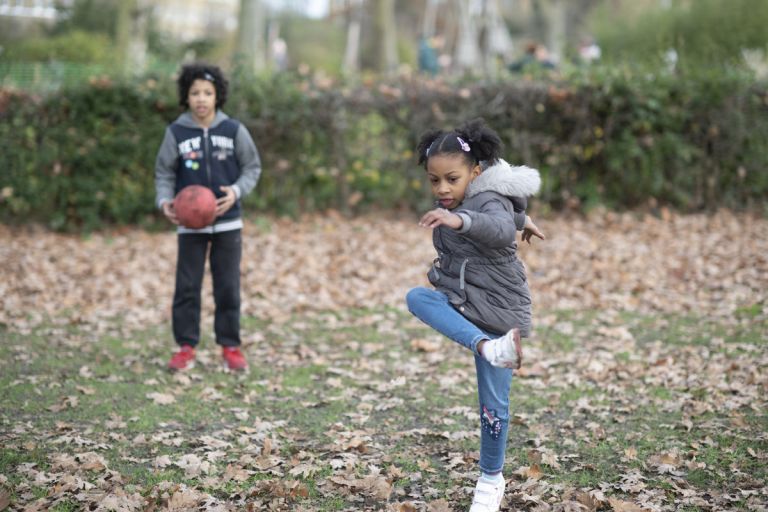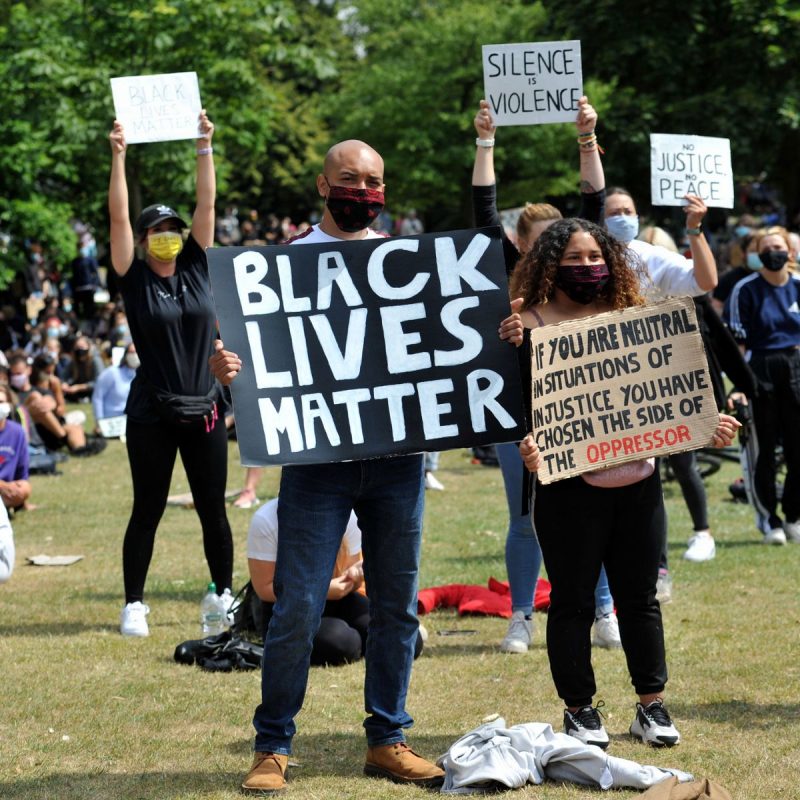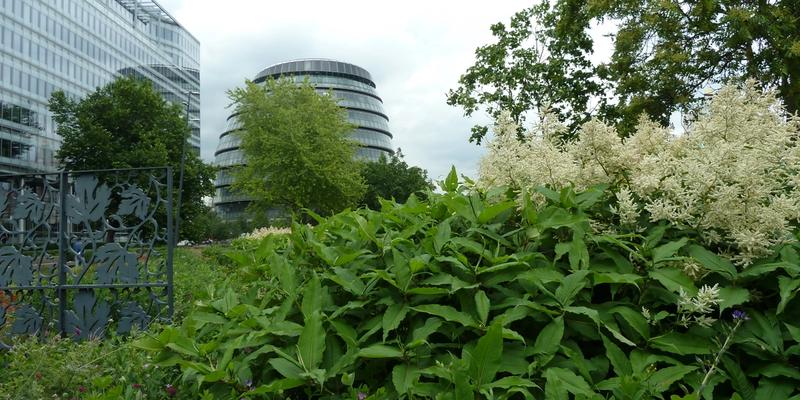Like all disasters COVID-19 has laid bare the existing social, economic and health inequalities of the societies it has swept through. Mark Walton looks at what it has revealed about who does – and doesn’t – have access to green space, and what we need to do about it.
A recent Public Health England report, ‘Disparities in the risk and outcomes of COVID-19’ demonstrates that people from Black ethnic groups were most likely to be diagnosed with COVID-19 and that death rates, after accounting for the effect of sex, age, deprivation and region, were highest among Black and Asian ethnic groups.
But it’s not only the infection and death rates that have impacted communities of colour most during the pandemic. A key aspect of life in lockdown has been the critical importance played by parks and public open spaces in enabling people without symptoms to maintain their physical, mental, and emotional health and wellbeing. A survey undertaken by CPRE and the WI found that 35% of people were visiting their local green space more during lockdown, but when it comes to access to green space during COVID communities of colour are doubly impacted.
According to the Office of National Statistics (ONS) one in eight households has had no access to a garden during the coronavirus lockdown, with Black people nearly four times as likely as White people to have no access to outdoor space at home. 37% of Black people had no outdoor space, compared to 10% of White people.
The survey found that access to public parks is more evenly distributed, with people from minority ethnic groups almost as likely as White people to say their local green spaces are “within easy walking distance”. However the fact a green space is close at hand does not mean that it is equally welcoming of different ethnic groups – a third level of inequality exists.

The last comprehensive research on the inter-relationship between urban green space, inequality, ethnicity, health and wellbeing, was undertaken a full 10 years ago by the Commission for Architecture and the Built Environment (CABE). Their report “Community green: using local spaces to tackle inequality and improve health” identifies that people living in deprived urban areas appreciate the value of local green spaces, but underuse the spaces that are most convenient because they are of poor quality and feel unsafe.
Some of the most acute effects of deprivation are felt by Black and Minority Ethnic communities living on a low income in urban areas, and the poor quality of their local environment has a considerable impact on their health and wellbeing. In gathering the evidence for the report CABE found that:
- if you live in a deprived inner-city area you have access to five times fewer public parks than people in more affluent areas, and
- in areas where more than 40 per cent of residents are Black or Minority Ethnic there is 11 times less green space than in areas where residents are largely White, and those areas are likely to be of a poorer quality.
The report identifies specific barriers to accessing urban green space for Black and Minority Ethnic groups, including:
- experience of racism and anxiety,
- fear of bullying, restricting access to play,
- lack of time and resources (including access to public transport), and
- issues of exclusion due to domination of urban green space by other groups of people.
Importantly it found that the barriers to use of green space were not cultural. Regardless of ethnicity, the experience of nature is restorative and associated with improved emotional wellbeing. Everybody values good quality green space that is well managed and maintained, including refugees and asylum seekers who may have experienced trauma in their home country and the stress of migration, and for whom parks allow space to relax, reflect, socialise and heal.
A further aggravating feature of the disparities in access to green space by Black and Minority Ethnic communities during the lockdown is that they have been nearly 50 per cent more likely to be arrested for breaking coronavirus laws than White people according to Metropolitan Police data.

As we emerge from lockdown there is a critical debate occurring about the lessons we have learned and the ways in which we need to ‘build back better’ as a society. These are thrown into sharp relief by the national and international conversation about structural racism and discrimination sparked by the murder of George Floyd by police officers in the United States; a killing that took place on the same day that Chris Cooper, a Black man out birdwatching in Central Park in New York, was reported to the police by a White woman for ‘threatening behaviour’ after he asked her to put her dog on a lead.
It is not enough that we capitalise on the increased awareness of the value of green space to health and wellbeing if we simply carry on managing and creating parks in ways that don’t feel safe for people of colour, that don’t cater to different cultures and ways of using and valuing outdoor space, and that don’t include people of colour in their design, use management, governance, and day to day decision making.
Parks should be some of our most democratic and liberating spaces; places to explore, gather, express ourselves, learn, and heal. Over recent weeks we have certainly seen their role as sites of socially distanced protest. However they also operate within, and sometimes exemplify, embedded hierarchies informed by race, class and gender; being appropriated by some, whilst excluding others.
Friends groups, for instance, may only represent the interests of those whose homes border the park, and not include those from the local estates for whom it is their only accessible outdoor space. Housing associations and local authorities may under invest in their green spaces, failing to provide places that are safe, interesting, welcoming and high quality. Increasingly we are seeing developers creating new public spaces that are paid for by a surcharge on residents, creating a sense of ownership amongst paying residents that can cause resentment when others come and use the space – a resentment that may be exacerbated by intolerance of racial, cultural or class differences.
As we come out of lockdown and think about how we use green spaces safely and fairly, and hopefully secure new resources for their creation and upkeep, we must also ensure they address the structural inequalities faced by communities of colour.
Local authorities and housing associations must do more to ensure parks and green spaces are places of welcome and safety, with spaces for different uses and gatherings, and facilitated activities for those who may not feel the space is immediately for them. Friends groups need to move beyond the interests of adjacent householders and actively engage with the communities for whom the park is their only green space; it is no longer enough to say ‘we tried’, or ‘we invited them’. Developers must consider how the finance and governance models they create for new green spaces ensure everyone is included in their use and management, and that the governance is shared between different communities irrespective of who pays.
Most of all we need an open conversation here, just as we do in all aspects of society, about how the ways we create, finance, manage and make decisions about green space reinforce long standing inequalities of race, culture and class – and what needs to change to ensure they contribute to a fairer future.
In the words of the authors of the ‘Community Green’ report: “Some people must manage a greater number of burdens yet have fewer economic and environmental assets or resources to draw upon … A changed political and economic landscape will include a fundamentally different relationship between local people and landowners, including registered social housing providers and local authorities.” 10 years later it must be time to make that change happen.



